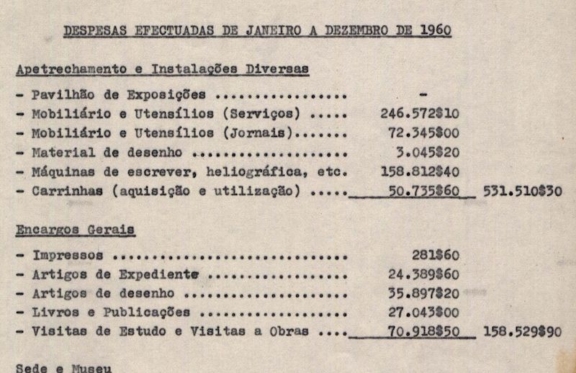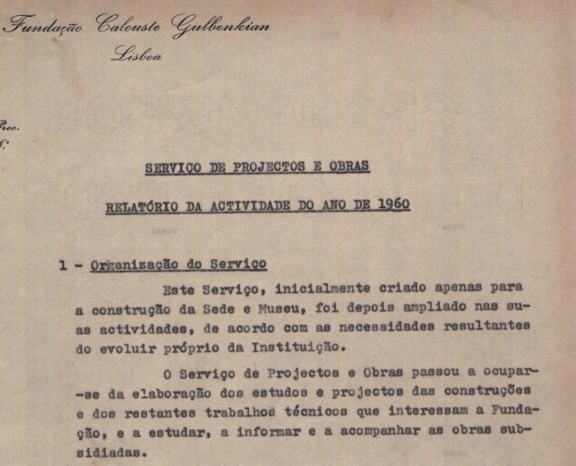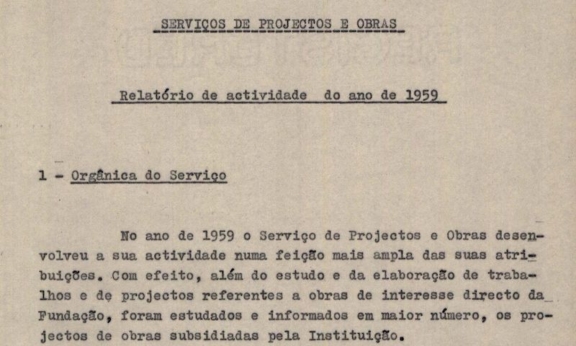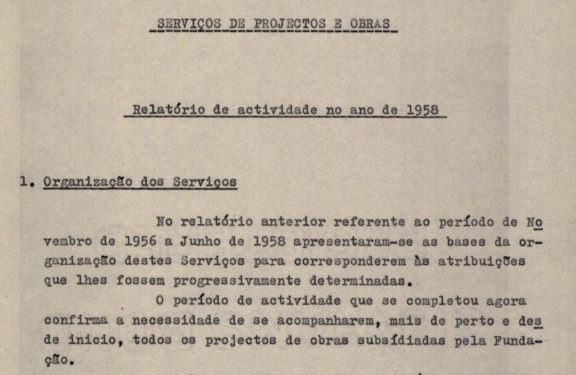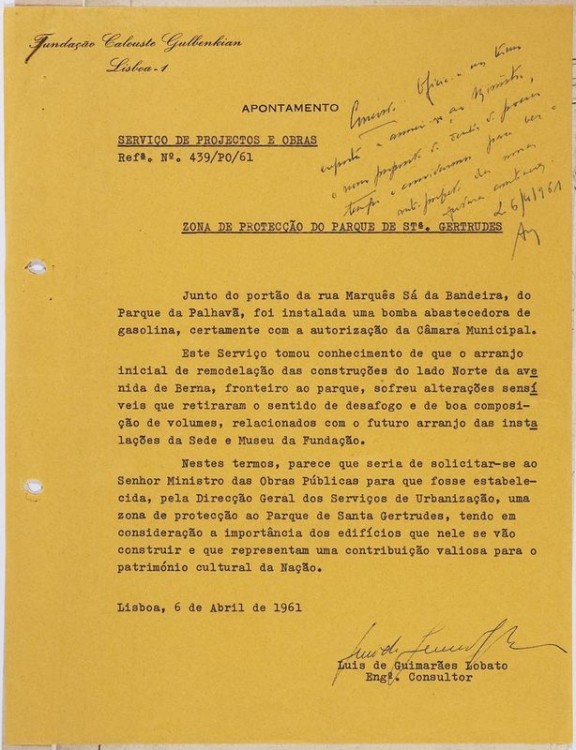
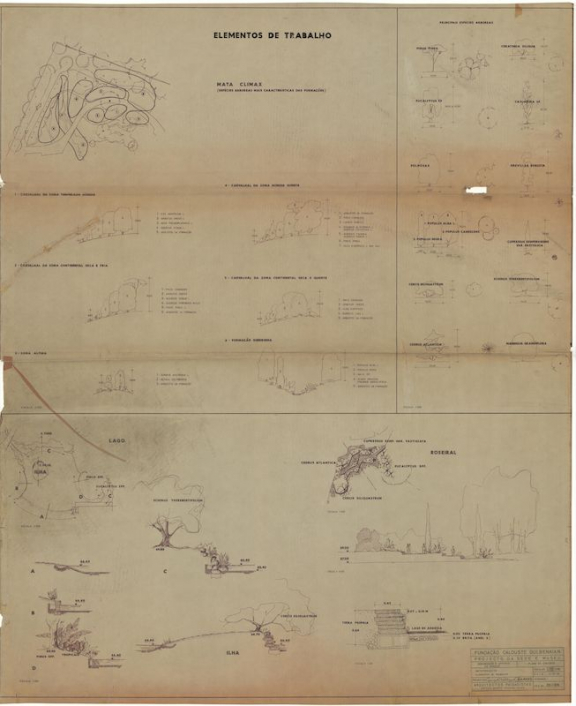
Preliminary Draft – Work Elements
In this proposal, the planting, a primordial element in any garden, is the great developer of space. This system consists of trees, bushes and herbaceous plants corresponding mainly to the different vegetal associations families which exist in the Portuguese landscape.
The species used in the climax forest (forest that has reached its maximum growth) were determined by the ecological situation of each area of land under plantation. This method of using vegetation is based on the book “A Árvore“ (“The Tree”) by Gonçalo Ribeiro Telles and Francisco Caldeira Cabral, published in 1960.
This predominantly ecological attitude does not reject the use of existing species of exotic trees. Rather, it draws on both, because “the possibility that both the existing specimens and the species which may be introduced, may enable the Foundation’s new park to play a role of some importance in the cultural development of the population. In this regard, a diversity of flora compatible with the unit is required. Moreover, the universalist elements of Portuguese culture ensure that those using the park will understand and respect that botanical exotics can be successfully integrated into the native landscape”.
In the woods, clearings and edges, one can find the notable trees identified in the study by the landscape architect Azevedo Coutinho.
The vegetation structure is defined in dialogue with the different functions and volumes of the buildings and the visual relations between them. The trees are isolated or become sparser near the building, creating areas that seem continuations of the interior space, or what designers refer to as “outdoor rooms”. They become denser further out, hiding, protecting or drawing attention to the urban spaces that surround the whole. Between these two spaces, denser on the periphery and sparser closer in, is the wood.
– defines the “broad layout based on the shade-light, tree-clearing contrasts” of the composition;
– hides “exterior aspects that compromise views or destroy environments” or enable “an important sightline to the Palace of the Embassy of Spain and from its square to the building”;
– attenuates the speed of the wind and filters out the noise “of the traffic in the surrounding streets”;
– creates “the quiet and intimate environment required” in a garden.
– enables the construction of space encompassing three landscape themes:
– The woods occupy areas most vulnerable to, or shaped by, the wind;
– The clearing is predominantly occupied by the lake;
– The hedge and the wall are the boudaries that define and protect the interior.
- Production date: 31/12/1961
- Designers (main authors): BARRETO, António Facco Viana, TELLES, Gonçalo Pereira Ribeiro
- Contributors (co-authors): FCG – Serviço de Projectos e Obras
- Project phase: Do concurso ao anteprojeto
- Identifier: PT FCG FCG:SPO-S002-D00026
- Temporal coverage: 1961
- Type of data: Image
- Extension format: 1 desenho
- Media format: jpg
- Materials: concrete, planting land, rock, schist, stone slab
- Vegetation: Acer pseudoplatanus | Sycamore, Arbutus unedo | Strawberry Tree, Betula celtiberica | Iberian White Birch, Casuarina sp. | Casuarinas, Casuarina equisetifolia | Horsetail Tree, Cedrus atlantica | Atlas cedar, Ceratonia siliqua | Carob Tree, Cercis siliquastrum | Judas Tree, Cupressus sempervirens ‘Stricta’ | Italian cypress, Cupressus sempervirens ‘Stricta’ | Italian cypress, Eucalyptus globulus | Blue Gum, Fraxinus angustifolia | Narrow-leafed Ash, Ilex aquifolium | Yellow Fruited Holly, Laurus nobilis | True Laurel, Magnolia grandiflora | Large-flowered Magnolia, Olea europaea ssp. sylvestris | Wild Olive, Pinus pinea | Umbrella Pine, Populus × canescens | Grey Poplar, Populus alba | White Poplar, Populus nigra | Black Poplar, Pyrus communis | European pear, Quercus coccifera | Kermes Oak, Quercus faginea | Portuguese Oak, Quercus pyrenaica | Pyrenian Oak, Quercus robur | Common Oak, Quercus rotundifolia | Holm Oak, Rhamnus alaternus | Mediterranean Buckthorn, Salix sp. | Willow, Schinus terebinthifolius | Brazilian Pepper Tree, Sorbus aucuparia | Mountain Ash, Ulmus minor | European Field Elm
- Keywords: altimetry, bank, ecological value, edges, exotic, flora, herbaceous, inert coating, island, lake, living coating, mass, native vegetation, phytoclimatic association, planting system, riparian gallery, rose garden, rubble walls, section, shrub, spacialitie, system, technical design, tree, tree cover, water system, woods
In order to consult the original version of this document you should contact the Gulbenkian Archives by e-mail [email protected] and refer the document´s ID


